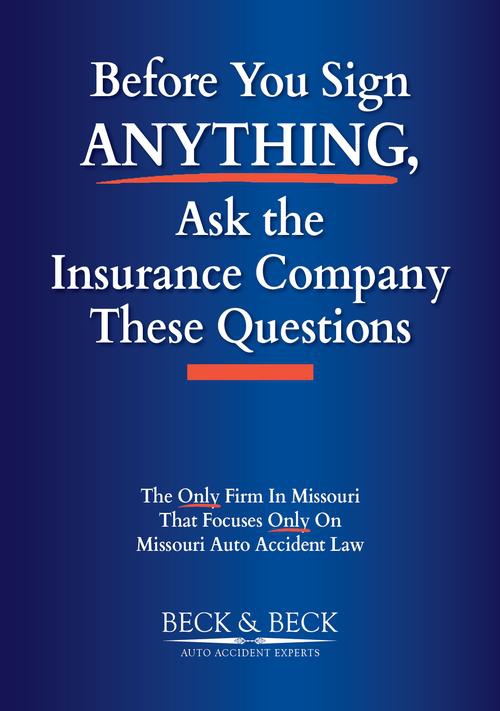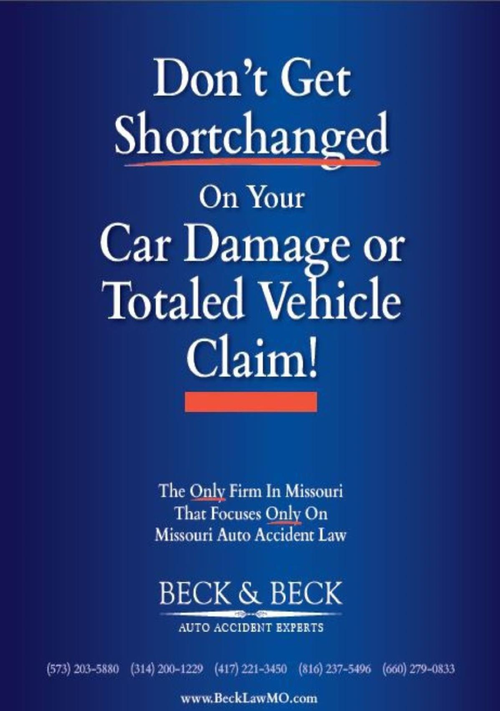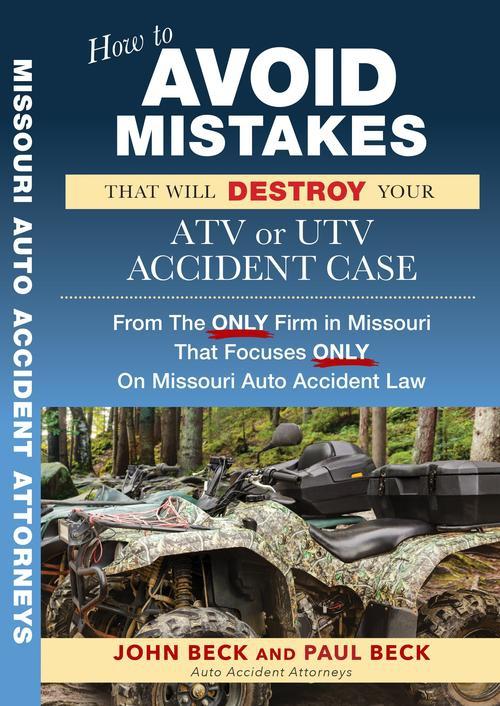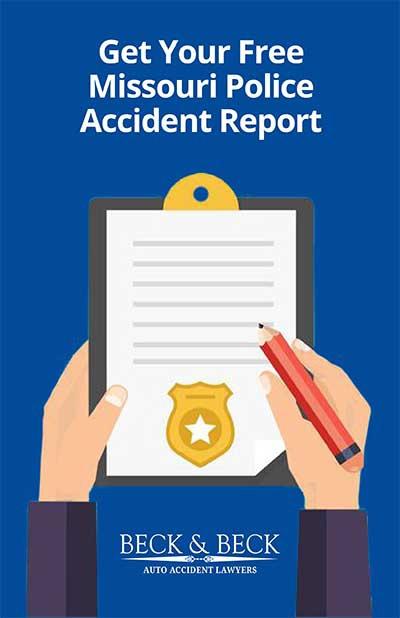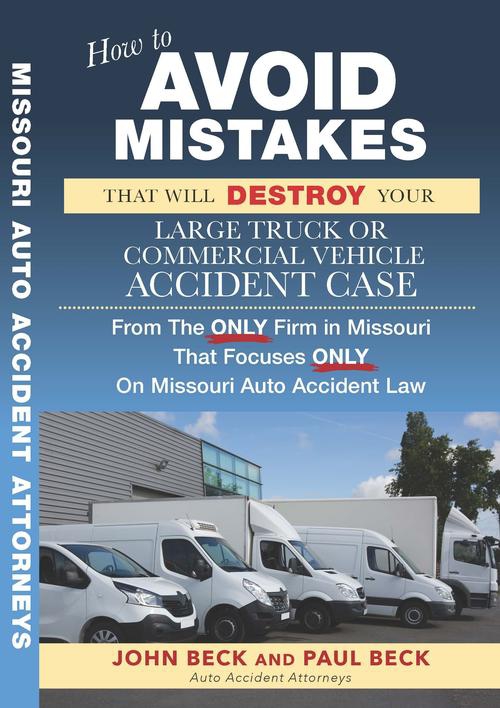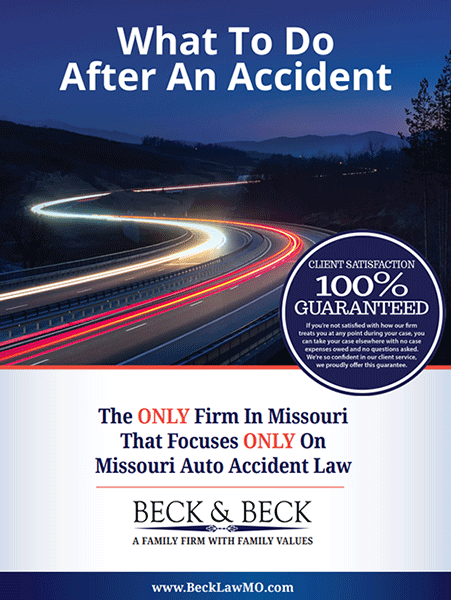To prove a driver was distracted in Missouri, you need concrete evidence like cell phone records, witness testimony, video footage, or vehicle data that shows the driver wasn’t paying attention at the time of the crash.
Missouri’s hands-free law makes it easier to establish negligence if you can show the other driver was holding a phone, but distraction can be proven even without a traffic citation.
Building a strong distracted driving case requires acting quickly to preserve evidence before it disappears. Phone records get deleted, surveillance footage gets erased, and witness memories fade, so immediate legal action is crucial to protect your claim.
What Counts as Distracted Driving in Missouri?
Distracted driving is any activity that takes your attention away from safely operating your vehicle. This happens when drivers focus on something other than the road ahead.
There are three main types of distractions you need to understand:
Visual distractions:
Taking your eyes off the road to look at your phone, GPS, or an accident scene
Manual distractions:
Removing your hands from the wheel to text, eat, or reach for items
Cognitive distractions:
When your mind wanders during emotional conversations or daydreaming
Texting while driving is especially dangerous because it combines all three types of distraction at once. You’re looking at your phone, using your hands to type, and thinking about your message instead of driving.
Common examples Missouri drivers deal with every day include checking social media, programming a GPS while moving, eating breakfast during the morning commute, and turning around to talk to children in the backseat.
Even adjusting your radio or climate controls can be a distraction if it causes you to lose focus on the road and lead to rear-end accidents.
Missouri law now recognizes how serious this problem has become. The state passed new rules to hold distracted drivers accountable when they cause crashes.
Does Missouri’s Hands-Free Law Help Prove Negligence?
Missouri’s Siddens Bening Hands-Free Law strengthens your case if you can show the other driver was holding their phone during the crash. However, you don’t need a citation under this law to prove the driver was distracted and at fault.
Even drivers who follow the hands-free law can still be held liable if their phone use caused the crash. A driver might use a hands-free device legally but still become distracted enough to cause an accident. What matters most is whether their distraction led to your injuries.
What Evidence Proves a Driver Was Distracted?
Proving distraction requires solid evidence, not just suspicion or guesswork. You need concrete proof that shows precisely what the other driver was doing at the time of the crash.
Several types of evidence work together to build a strong case against a driver who is distracted.
Cell Phone Records and App Data
Cell phone records provide timestamps that show exactly when calls, texts, and data were used. These records can be matched to the exact time of your accident to prove the driver was on their phone.
Your attorney can obtain records through legal discovery that show call logs, text message times, and even data usage from social media apps. Phone companies maintain different types of records for varying time periods, so acting quickly is crucial.
App usage data from Facebook, Instagram, TikTok, and other platforms can also be obtained. This digital evidence often provides the most substantial proof that a driver was distracted at the moment of impact.
Vehicle EDR and Infotainment Logs
Most modern cars have an Event Data Recorder, or EDR, which is similar to a black box that records events leading up to a crash.
The EDR captures information about speed, braking, and steering in the seconds leading up to impact.
When EDR data shows no braking or steering input, it often means the driver never saw the danger coming. This pattern strongly suggests that the driver was distracted and not paying attention to the road.
Newer vehicles also track infotainment system use, showing if the driver was adjusting radio settings, climate controls, or navigation systems at the time of the crash. This data can prove the driver was focused on something other than driving safely.
Traffic, Security, and Dashcam Video
Video footage provides visual proof that’s hard to argue against. Several sources might have captured the crash or the moments leading up to it.
Potential video sources include red-light cameras at intersections, security cameras from nearby businesses, dashcams from other drivers, and even cameras in rideshare.
You need to act fast because most video footage gets deleted automatically. Video recordings are often deleted or overwritten automatically, so it’s essential to request and preserve footage as soon as possible after a crash.
Witness Statements and Police Reports
Eyewitnesses who saw the other driver using their phone or acting distracted provide crucial testimony. People in nearby cars, pedestrians, or passengers might have noticed the driver wasn’t paying attention.
The police report documents what the responding officer observed at the scene. Officers often note if they saw a phone in the driver’s hand or if the driver admitted to being distracted. Any citations issued for distracted driving strengthen your case.
Passengers in either vehicle can also provide important information about what the driver was doing before the crash. Their statements often carry significant weight because they had the best view of the driver’s behavior.
Crash Scene Clues and Reconstruction
The physical evidence at the crash scene tells its own story about what happened. Specific patterns strongly suggest a distracted driver.
Missing skid marks often indicate the driver never tried to brake, which suggests they never saw the danger. The location and angle of impact can indicate whether a vehicle drifted out of its lane without any attempt to correct its course.
Accident reconstruction experts analyze these physical clues scientifically. They can determine vehicle speeds, impact angles, and driver reaction times to prove a driver wasn’t paying attention to the road.
Social Media and Digital Footprints
Sometimes drivers create their own evidence by posting on social media while driving or just before a crash. Timestamps on photos, status updates, or location check-ins can prove exactly when and where someone was using their phone.
Dating app activity, livestreaming, and even online gaming can serve as evidence of distraction. Any digital activity with timestamps near the crash time can be used to prove the driver wasn’t focused on driving.
Your attorney can request this digital evidence through the legal discovery process to build your case.
What Steps Should You Take Now to Preserve Evidence?
Evidence disappears quickly after a car accident, so you must act immediately to protect your legal rights. Waiting even a few days can mean losing crucial proof forever.
Send a Spoliation Letter
A spoliation letter is a formal legal notice your attorney sends to the at-fault driver and their insurance company. This letter legally requires them to preserve all evidence related to the crash.
The letter specifically tells them they cannot delete text messages, call logs, photos, social media posts, or any other digital evidence. If they destroy evidence after receiving this notice, they can face serious legal penalties.
Your attorney should send this letter as soon as possible after the crash. Once evidence is deleted, it’s often impossible to recover, which can severely damage your case.
Capture Photos and Identify Cameras
If you’re physically able, take photos of everything at the crash scene. Document the positions of all vehicles, damage to both cars, skid marks, and debris scattered on the road.
Look inside the other driver’s car for visible phones, food, or other items that might indicate distraction. Take pictures of nearby businesses that might have security cameras.
Write down the names and addresses of businesses with cameras so your attorney can request footage before it gets erased. Even if you can’t see cameras, many businesses have them, so note every nearby location.
Get Medical Care and Document Symptoms
Seek medical attention immediately, even if you feel fine at the scene. Adrenaline and shock can mask serious injuries that become apparent hours or days later.
Tell your doctor about every symptom you experience, no matter how minor it seems. Some injuries like concussions or soft tissue damage take time to fully develop.
Keep detailed records of all medical treatment, including doctor visits, prescriptions, physical therapy, and any medical equipment you need. These records prove the extent of your injuries and their connection to the crash.
Avoid Recorded Statements and Posting Online
Never give a recorded statement to any insurance company without speaking to an attorney first. Insurance adjusters are trained to ask questions that can be used to minimize your claim or shift blame to you.
Stay completely off social media after your accident. Even innocent posts about your daily activities can be taken out of context and used to argue that your injuries aren’t as serious as you claim.
Insurance companies regularly monitor social media accounts of accident victims, looking for evidence to use against them. The safest approach is to avoid posting anything until your case is resolved.
How Does Comparative Fault Affect a Distracted Driving Claim in Missouri?
Missouri uses a pure comparative fault system, which means you can still recover compensation even if you were partially responsible for the accident.
Here’s how it works with a real example. If you have $100,000 in total damages but are found 30% at fault for speeding, you can recover 70% of your damages, which equals $70,000. The other driver’s distraction would make them 70% at fault.
This is why proving the other driver’s distraction is so vital to your case. The more evidence you have of their negligence, the less fault can be assigned to you. Strong proof of distraction often makes it clear that their behavior was the primary cause of the crash.
Even if you made a minor error, such as slightly exceeding the speed limit, the other driver’s decision to text and drive typically makes them primarily responsible for the accident.
How We Prove Distracted Driving for Missouri Clients
At Beck & Beck Missouri Car Accident Lawyers, our award-winning Missouri distracted driver accident attorneys developed a proven system for holding distracted drivers accountable. Our approach focuses on gathering evidence rapidly and conducting thorough investigations.
Rapid Evidence Preservation
We act immediately by sending spoliation letters to preserve all digital evidence. We issue subpoenas for phone records, vehicle data, and surveillance footage before it can be destroyed or deleted.
Our team at Beck & Beck Missouri Car Accident Lawyers knows exactly which phone carriers delete data the fastest and which types of evidence disappear first. We move quickly because waiting even a few days can mean losing crucial proof forever.
We also coordinate with accident reconstruction experts and technology specialists right away. This ensures we capture time-sensitive evidence while it’s still available and fresh.
Subpoenas, Discovery, and Expert Analysis
We use the full power of the legal system to compel the production of evidence that the other side might want to hide. Our attorneys know how to obtain phone records, app usage data, and vehicle computer information through legal discovery.
We collaborate with technology experts who can analyze complex digital records and even recover data that drivers have attempted to delete. These specialists can often uncover evidence of distraction that isn’t readily apparent to insurance companies or police officers.
Our investigation often uncovers evidence that significantly strengthens your case. We look beyond the obvious and dig deep to find proof that the other driver was negligent.
Trial-Ready Strategy That Drives Settlement
We prepare every case as if it’s going to trial, even if we expect it to settle. This approach sends a clear message to insurance companies that we’re serious about obtaining full compensation for you.
Insurance companies recognize that we possess the experience and resources to pursue cases in court when necessary.
This reputation often leads to much better settlement offers because they know we won’t accept lowball amounts.
When we present substantial evidence of distracted driving, it becomes clear that a jury would likely hold the other driver fully responsible for your injuries. This pressure often motivates insurance companies to offer fair settlements.
Missouri Auto Accident Law… It’s All We Do
At Beck & Beck, Missouri Car Accident Lawyers, we’re the only law firm in Missouri that focuses exclusively on auto accident law. We understand how frustrating it is to be injured because another driver made the selfish choice to text, talk, or otherwise ignore the road.
You don’t pay us any fees unless we win your case. You can reach out to our team at any time with your questions, and we’ll be happy to help you get started on your claim.
We handle every aspect of the legal process so you can focus on recovering from your injuries. From gathering evidence to negotiating with insurance companies, we take care of everything while keeping you informed every step of the way.
Call us at (314) 207-9996 or reach out online to discuss your case with our team.
FAQ: Proving Distracted Driving in Missouri
Can I get the other driver’s phone records without filing a lawsuit?
No, phone companies will not release records without a legal subpoena, which requires filing a lawsuit. Your attorney must use the court’s authority through the discovery process to obtain this critical evidence.
How long do phone carriers keep text messages and call records?
Most carriers keep call and text logs for one to two years, but the actual content of messages is usually deleted within 3 to 5 days. This is why immediate legal action is essential to preserve evidence.
Do I need a police citation for distracted driving to win my case?
No, you don’t need a traffic ticket to prove liability in a civil claim. Many distracted driving accidents occur without citations being issued, but you can still hold the driver financially responsible for your injuries.
What happens if the distracted driver was working when the crash occurred?
If the driver was on the job, their employer may be held partially responsible under vicarious liability laws. These cases often involve commercial insurance policies with much higher coverage limits than personal auto policies.
Can deleted text messages and phone data be recovered?
Sometimes, forensic experts can recover deleted data, but it’s not guaranteed. If a driver destroys evidence after receiving a spoliation letter, they can face serious legal sanctions from the court.
How quickly can surveillance footage be deleted or overwritten?
Many systems automatically delete footage after 7 to 30 days, while others overwrite recordings in as little as 24 to 72 hours. This makes it critical to identify and request video evidence immediately after a crash.
What if I was also using my phone when the accident happened?
Under Missouri’s pure comparative fault rule, you can still recover damages even if you were also distracted. Your compensation would be reduced by whatever percentage of fault is assigned to you.
Does Missouri’s hands-free law apply to all drivers or just young drivers?
The Siddens Bening Hands-Free Law applies to all drivers in Missouri regardless of age. No driver can hold or support a cell phone with any part of their body while operating a vehicle.
Related Articles
What is the average payout for a non-injury car accident in Missouri?
Can I sue for emotional distress after a car accident in Missouri?

